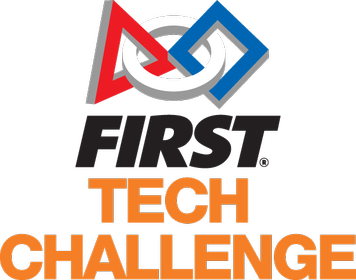10 Ways to Learn Robotics for High School Students
In today's rapidly evolving technological landscape, high school students have the opportunity to dive into exciting fields like robotics and artificial intelligence. Learning about robotics not only opens doors to future career prospects but also nurtures problem-solving skills, creativity, and a deeper understanding of the world of automation.
If you are someone who is interested in robotics and wants to pursue a career in it, or at the intersection of it, you should definitely consider getting a head start! It will help pave the way for stronger foundations, innovations, and career opportunities.
Here, we'll explore 10 valuable ways for high school students to get started on their journey of learning robotics.
1. Start with the basics: STEM education platforms, online tutorials, and books
Online tutorials and books provide a solid foundation for beginners. These resources introduce students to key concepts, terminology, and the basics of robot design and operation.
- Khan Academy: It offers a wide range of free STEM courses, including math, physics, and computer science, which can provide a strong foundation for robotics.
- MIT OpenCourseWare: In addition to robotics courses, MIT OpenCourseWare offers free access to various STEM courses and materials, including lectures, notes, and assignments.
- Code.org: It provides coding tutorials and activities designed to introduce students to computer science concepts, a valuable skill in robotics.
- Robotics Learning: This platform offers a series of beginner-friendly online tutorials that cover topics such as building a basic robot chassis, understanding sensors, and programming robot movements.
- Book: "Getting Started with Raspberry Pi" by Matt Richardson and Shawn Wallace is a great book that introduces high school students to Raspberry Pi, a versatile platform for robotics and electronics projects.
2. Join robotics clubs at school
Robotics clubs at school offer a collaborative environment for students interested in robotics. These clubs often participate in robotics competitions, providing students with the opportunity to work on real-world robotics projects, from design and construction to programming and testing.
- FIRST Robotics Team: Many high schools have FIRST Robotics Competition (FRC) teams. Joining a local FRC team allows students to work on large-scale robots for competitive events.
- VEX Robotics Team: VEX Robotics is a popular platform for robotics competitions. Joining a VEX Robotics Club at your school can provide opportunities to design, build, and compete with VEX robots.
- Botball Team: Botball is an educational robotics program that offers competitions for high school students. Joining a Botball team allows you to design and program autonomous robots.
- School STEM Club: Many schools have general STEM clubs that may include robotics as one of their focus areas. Joining such a club can be a great way to explore robotics in a collaborative setting.
3. Explore DIY robotics kits
DIY robotics kits are great hands-on learning tools. They include hardware components and instructions to build robots. Working with these kits allows students to apply theoretical knowledge and gain practical experience in assembling, programming, and controlling robots.
- LEGO Mindstorms EV3: The LEGO Mindstorms EV3 kit comes with programmable bricks, sensors, and LEGO pieces, allowing students to build and program their own robots.
- Raspberry Pi Starter Kit: A Raspberry Pi Starter Kit includes a Raspberry Pi computer, accessories, and components for various robotics projects. It's a versatile platform for learning robotics and programming.
- Arduino Starter Kit: The Arduino Starter Kit provides a microcontroller and components for creating interactive projects, including robots. It's an excellent choice for beginners in robotics and electronics.
- Makeblock mBot: The Makeblock mBot is an educational robot kit suitable for beginners. It offers a fun way to learn about robotics, sensors, and programming.
4. Do an online robotics course
Online robotics courses available that offer structured and comprehensive learning experiences. These courses cover various aspects of robotics, including kinematics, sensors, and control systems. Students can engage in interactive assignments and projects to apply what they've learned.
- edX Course: The "Robotics: Aerial Robotics" course by the University of Pennsylvania on edX covers aerial robotics concepts, including drone design and control.
- eCornell: The "Device Design with Arduino" on eCornell by Cornell University provides a series of courses on arduino robotics & design, from the basics to advanced topics.
- MIT OpenCourseWare: MIT OpenCourseWare offers free access to various robotics courses, including "Introduction to Robotics" and "Principles of Autonomy and Decision Making."
- Udemy Course: "ROS for Beginners: Basics, Motion, and OpenCV" on Udemy teaches students how to work with the Robot Operating System (ROS), a popular platform in robotics research.
5. Participate in robotics competitions
Participating in robotics competitions is an exciting way to challenge your skills. These competitions require students to design and build robots to complete specific tasks or challenges. These events encourage teamwork, problem-solving, and creativity.
- RoboCup: The RoboCup competition challenges teams to develop autonomous soccer-playing robots. It's a global event that brings together students and researchers to showcase their robotics and AI skills.
- Botball Competition: The Botball Competition encourages students to design, build, and program autonomous robots to complete specific tasks on a game board. It emphasizes creativity and problem-solving.
- National Robotics Challenge: The National Robotics Challenge offers a variety of competitions, including robot combat, autonomous navigation, and robot construction challenges. It caters to a wide range of interests and skill levels.
- FIRST Tech Challenge (FTC): FTC is another robotics competition for high school students, focusing on designing and building robots to compete in team-based challenges. It provides hands-on experience in engineering and teamwork.
If you are interested in participating in a robotics competition, check out this blog on 10 robotics competitions for high school students.
6. Explore YouTube Channels
YouTube is a valuable resource for visual learners. It hosts a vast library of robotics tutorials and demonstrations, ranging from beginner to advanced topics. This is a good option for self-paced learning.
- Make: This YouTube channel features a plethora of robotics projects, tutorials, and maker-related content that can inspire and guide students in their robotics endeavors.
- RobotShop: This YouTube channel offers a wide range of videos on robotics, including product reviews, tutorials, and demonstrations of various robotic systems and technologies.
7. Learn programming languages
Programming is a fundamental skill in robotics. Learning different coding languages equips students with the tools to control and program their robots. Understanding these languages allows for more intricate robot behaviors and customization.
- Python: High school students can learn python, a versatile and beginner-friendly programming language, through online resources like Codecademy or Python.org Python is commonly used in robotics for its simplicity and readability.
- C++: For those looking to delve deeper into programming for robotics, learning C++ can be valuable. Resources like cplusplus.com and LearnCpp.com offer comprehensive C++ tutorials.
- Arduino Programming: To program Arduino-based robots, students can explore the official Arduino website and various online tutorials that cover programming in the Arduino IDE using C/C++.
- ROS (Robot Operating System): For advanced robotics development, students can learn to work with ROS, a framework that utilizes both Python and C++. The official ROS Wiki provides extensive documentation and tutorials.
8. Attend robotics workshops and camps
Robotics workshops and camps offer immersive learning experiences. Many organizations host workshops that provide access to specialized equipment and expert guidance. Students can explore advanced concepts, build complex robots, and collaborate with peers who share their passion.
- Tech Camps for Students: Organizations like Tech Corps offer robotics workshops and camps where students can immerse themselves in robotics projects, learn from instructors, and collaborate with peers.
- Local Maker Spaces: Some communities have maker spaces that offer workshops and classes in robotics and electronics. Check if there's a maker space near you that provides hands-on learning opportunities.
- STEM Summer Camps: Many STEM-focused summer camps include robotics as part of their curriculum. These camps provide a fun and educational environment for students to explore robotics. Check out this list of summer robotics camps you can take part in!
- University Outreach Programs: Some universities and colleges host outreach programs, including robotics workshops for high school students. These programs can provide access to advanced equipment and expertise.
9. Engage with online communities
Online communities are a great way for beginners to learn from others who are more experienced in the field. These communities provide a platform for students to ask questions, seek advice, and share their projects with a global community of robotics enthusiasts.
- Reddit - r/robotics: The r/robotics subreddit is a vibrant online community where students can ask questions, share projects, and engage in discussions related to robotics and AI.
- Robotics Stack Exchange: The Robotics Stack Exchange is a Q&A platform where students can ask specific questions about robotics and receive answers from experts and enthusiasts.
10. Build personal projects
Personal projects allow students to apply their knowledge and creativity. Whether it's building a line-following robot, a remote-controlled car, or an automated home appliance, personal projects provide an opportunity to experiment, troubleshoot, and innovate. They also foster a sense of ownership and accomplishment. Here are some simple projects to help you get started:
- Obstacle-Avoidance Robot: Create a small robot that can navigate a room without colliding with objects using sensors like ultrasonic distance sensors or infrared sensors.
- Line-Following Robot: Build a robot that can follow a predefined path or track a line on the ground using line-following sensors.
- Home Automation System: Develop an automated system for controlling lights, appliances, or security devices in your home using robotics components like servo motors and IoT technologies.
- Robot Arm: Construct a robotic arm with multiple joints and end-effectors capable of picking and placing objects. This project can involve programming complex movements and interactions.
If you’re looking to build unique projects in the field of AI/ML, consider applying to Veritas AI!
Veritas AI was founded by Harvard graduate students, and through the programs, you get a chance to learn the fundamentals of AI and computer science while collaborating on real-world projects. You can also work 1-1 with mentors from universities like Harvard, Stanford, MIT, and more to create unique, personalized projects. In the past year, we had over 1000 students learn data science and AI with us. You can apply here!
Image Source: FIRST Tech Challenges

